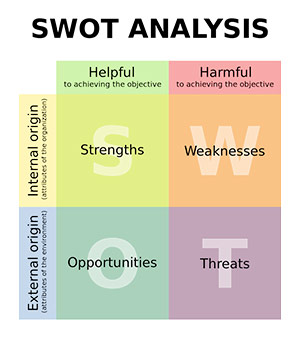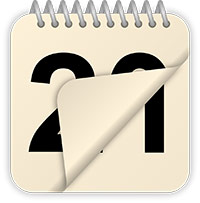Creating a communications action plan
Jun 20, 2020

If you’ve ever competed in sport at a high level, you know the importance of a training plan. “Failing to plan is planning to fail,” a coach might have told you. “A goal is a dream with a deadline.” This sentiment is also true when it comes to marketing and communications. It’s no longer enough to create a brochure or an article on your website and hope that it reaches the right audience. If you want to get your organization’s message out into the world, you need to communicate with a purpose.
Busy sports communicators might feel that they don’t have time to stop, take a breath, and create an action plan. Investing a little time to plan, however, saves you time and money because it ensures that all of your efforts relate back to your goals. If you only have eight hours a week to devote to communications, you need to ensure that those eight hours are the most efficient and effective possible.
In the first module of the viaSport communications toolkit, we’ll make communications planning easy by walking you through the process step-by-step. In the first part of this module, we’ll lay the groundwork for a solid communications action plan by helping you take stock of your organization’s current communications capacity. In the second part, we’ll put the pieces together to create a plan.
Step 1: Take stock of your assets
Even if you’re a small organization, you probably have more communications assets than you realize. Do an inventory of all of your many assets and evaluate whether your organization currently uses an asset and if it needs to be updated or changed. Some assets, such as social media, will need constant updating. Others, like a brochure, many only need to be updated every few years. If you don’t have an asset, assess whether you need it.
Download this template for a list of communications assets: TEMPLATE
Remember: your asset list should encompass more than just your communications products. You should also include:
- Communications tools like Photoshop, Hootsuite, Constant Contact etc.
- Equipment (cameras, videos, etc).
- Human resources. Who will help you carry out this project? Include both paid staff and volunteers.
- Partners who could amplify your message or donate ad space, time etc.
Step 2: Create a budget

As you can see from the above template, there are dozens of different communications products. How many of them you can feasibly accomplish depends both on your goals and your budget.
There are two parts to a budget: financial and human resources. The latter is most often overlooked when it comes to communications planning. Even if you have a robust budget, you won’t be able to accomplish your goals if you don’t have enough well-trained people to execute your plan.
When creating your budget, ask yourself:
- How much money does my organization’s budget have reserved for communications and marketing?
- Who will carry out my communications plan?
- How many hours does my organization have this year to devote to communications and marketing?
- Could any of this work be done by a volunteer or a summer student?
- Could any of these communications products (ad space, etc.) be donated?
Step 3: Call in the ‘SWOT’ team
Before you can move forward, you need to take stock of your organization’s current state of affairs. Many organizations find it helpful to use a SWOT analysis. SWOT stands for:

Strengths: What has your organization done well this year? What communications products are performing above expectations?
Weaknesses: What do you struggle with when it comes to communications? What skills or abilities does your organization lack (graphic design experience, etc)? What obstacles have you encountered?
Opportunities: What opportunities do you have to succeed this year? Are you hosting any events? Are there any upcoming promotional campaigns that you could take part in, such as the 2015 Year of Sport? Will major games like the Toronto 2015 Parapan Am Games or the Olympics/Paralympics bring increased attention to your sport?
Threats: Do you face any communications threats? Threats to your organization involve more than potential PR crises. Perhaps all of your organization’s photos are stored on a single computer and could be lost forever if that computer is stolen or damaged. Maybe your website is so outdated and/or dysfunctional that your organization risks gaining a negative reputation if it’s not improved.
A SWOT analysis is most effectively done in a team environment. Involve your entire staff, key volunteers, coaches, and even your board of directors to ensure that you are getting a well-rounded view of your organization.
Step 4: Find your baseline
A good communication plan relies on measurable goals. Creating a baseline allows you to measure the success of your communications action plan moving forward and make smart decisions to improve your plan. Metrics are also a valuable tool to showcase your success to sponsors, partners, donors, granting organizations and the government.
Many sport communicators will take a look at the following checklist and panic because they don’t track any metrics. That’s okay. Some metrics are easy to access using Google Analytics or other services. For other fields, a mark of success may be that this year you’re tracking data that you’ve never tracked before. You also don’t need to track every metric listed in the checklist. When we set our goals and objectives in Part 2 of this module, you’ll be able to see which metrics make the most sense for your organization.
Download the METRICS CHECKLIST
Step 5: Ask your community

Even the best metrics only give you part of the story of how well your organization’s communication strategy is performing. To get the full picture, you must ask your audience. Create a simple survey and ask your members how well you’re doing. (Remember: giving away a simple prize greatly increases the number of survey responses you receive). If you don’t have the capacity to create a survey, target a few members of your organization (coaches, parents, volunteers, athletes, etc.) and ask them to provide you with feedback.
Some potential survey questions include:
- How effectively did we communicate with you this year?
- How useful did you find our website/ newsletter/ social media?
- Do you follow us on social media? If not, why not?
- When you need information about our organization, where do you first look?
- If you could improve one thing about our communications, what would it be?
- Please rate the readability/accuracy/timeliness of our communications?
- What would you like to see more of on our newsletter/website/social media?
- What would you like to see less of?
Step 6: Check your calendar

Many sports communicators spend a large percentage of their working hours promoting programs, tournaments, leagues and other events. Create a calendar that outlines when these events will take place. If you don’t know an exact date, try to estimate what month the event will occur.
If you’ve reached Step 6, you’ve already put in a lot of hard work taking stock of your organization’s current communications efforts.
In the next module (Part 2), we’ll take all of this data and turn it into a simple, useful communications action plan.
Have questions about this module? Get in on the conversation by tweeting @ViaSportBC or @arley_mcneney or email us at info@viasport.ca





